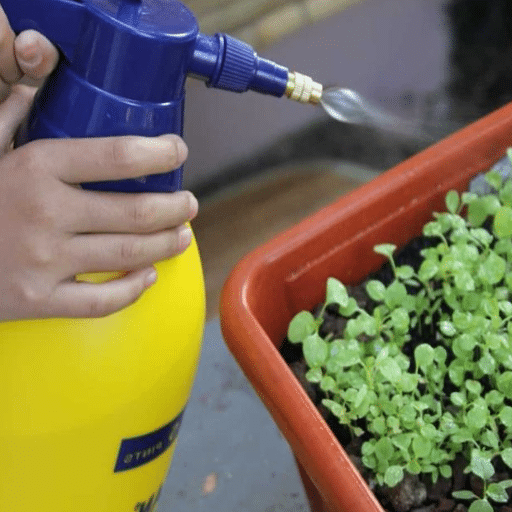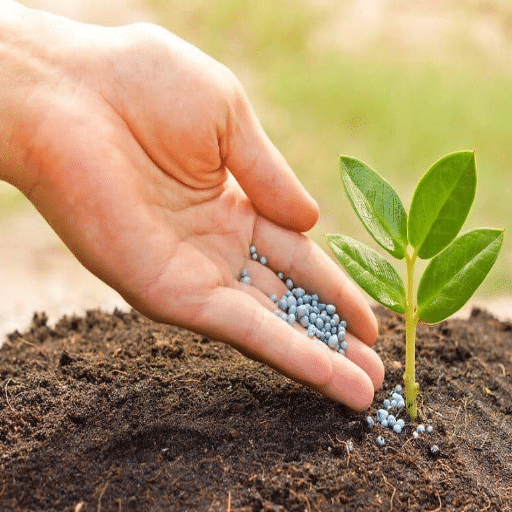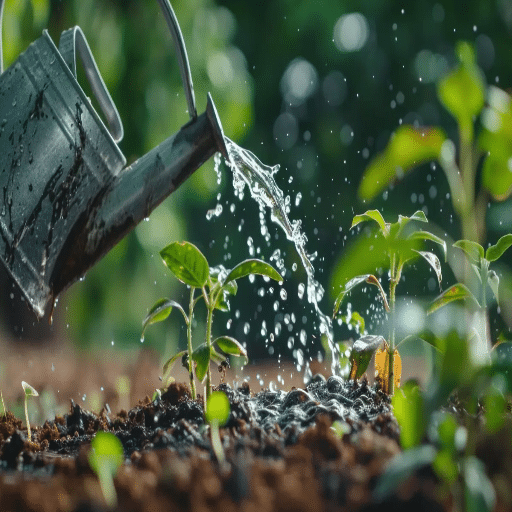Introduction
Liquid organic fertilisers have become one of the hallmark products in the transition to ecological farming today. These are organic fertilisers – made from compost, animal manure, various extracts of plants, etc – blended into a liquid to help plants grow and improve the quality of soil. Compared with the solid form of organic fertilisers mentioned above, liquid organic fertilisers exhibit a more dynamic mode of delivery. The action of soil bacteria is the most significant difference between these two forms.
Why are liquid organic fertilizers considered valuable? It’s not just about what they contain, but the fact that they use the power of fluids in how fertilisers make their way into the soil, and in how plants absorb their nutrients. Because of the naturally liquid form of these fertilisers, they have the ability to move around more freely in your soil than granular fertilisers. That means your nutrients are delivered directly into the soil – and then the plant roots – much more quickly, so your plants start growing more robustly and more rapidly.
The fluid aspect of liquid organic fertilisers also simplifies their application, as you can use them as foliar sprays and even with drip systems to more effectively administer nutrients to your crops and minimise waste.
Compared with conventional solid mineral fertilisers, the advantages of the liquid organic fertilisers are many and varied. Apart from boosting plant growth, the liquid organic fertilizers are very important to increase the total health and havocresilience of agricultural ecosystems. By injecting organic nutrients and boosting microbial activities of the soils, the liquid organic fertilisers are an accelerator of regeneration and longevity of the soils. Their low level of nutrient leaching and runoff mitigate eco-degradation and serve as additional principles of sustainable agriculture and ecological stewardship.
Understanding Liquid Organic Fertilizers
These liquid organic fertilisers are a blend of nutrient-dense mixtures that originate from organic materials and undecomposed inputs such as compost, animal manure, plant extracts, in addition to amino acids and other plant components derived from natural mineral sources, and which undergo a rigorous extraction and medium fermentation process. This formulation is available in different types, forms and application methods including liquid concentrates and bio-stimulant mixtures.
Given the broad usage of these fertilisers, and the benefit of the natural interactions involved, these fertilisers can be used to enable optimal plant nutrition. The production and processing of liquid organic fertilisers is characterised by minute details, within which the integrity of the inputs as organic matter and the efficacy of the manufactured product are maintained at every step.
The nutrients are diluted in water to the proper concentrations so that they have a balanced proportion of the macro- and micro-nutrients the plant needs (such as nitrogen, phosphorus, potassium, micronutrients, etc). Because no harmful chemicals, salts or noxious ingredients are mixed in synthetic fertilisers, liquid organic fertilisers are much safer than chemical-based fertilisers. The fermentation process enhances the bioavailability of the nutrients. Our mixtures are widely accepted to be of high quality and are very easily absorbed by plants.
From a farmer perspective, different types of liquid organic fertilisers offer unique values and convenience in various aspects. For example, there can be different formulations for different target crops or soil conditions, or even with supplemental ingredients such as beneficial microbes or organic acids to improve soil fertility and plant health.
With the feature of ‘liquid,’ liquid organic fertilisers can be easily combined with field irrigation, foliar spraying, fertigation, drip irrigation systems and other techniques, facilitating farmers and growers to apply fertilisation in tune with their cropping systems and soil and environmental conditions.
In short, liquid organic fertilisers combine the advantages of the foodweb approach with those of the liquid formulations. The fertiliser relies on the proper nutrients created by nature to sustain healthy plants, soils and crops.

Advantages of Liquid Organic Fertilizers
Liquid organic fertilisers are important to the advancement of agronomy because the liquid solution can permeate the soil texture more readily to allow direct uptake by plant roots. The solution can readily penetrate further in the soil, instead of staying in soil surface. It not only helps to improve soil structure and microbial activity, but also promotes environmental sustainability by using less water resource because of less leaching and nutrient runoff.
One of the greatest benefits of liquid organic fertiliser is that its nutrients can be easily absorbed and utilised by the plants. In comparison with solid fertilisers, after being applied to the soil, it requires a certain time period for solid fertiliser to be decompased and released into soil to be absorbed by crops, which results in the low efficiency of utilisation for nutrients.
On the contrary, liquid organic fertiliser can provide plants with the needed source of nutrients almost on the spot and these nutrients will be absorbed and utilised automatically for plants. Because of their fast nutrients absorbing efficiencies, plants will grow acceleratedly, bears greater harvests and has better plant health.
Additionally, the application of liquid organic fertilisers can improve soil health and fertility by increasing soil microbial activity and improving soil structure. The organic matter in the fertilisers can act as growing space for microorganisms that cycle nutrients (nutrient cycling) and perform other functions in healthy soils. As microorganisms decompose the organic matter in, on and around plants, they release nutrients into forms that are available to plants, thus improving nutrient cycling and soil fertility in the long term.
The use of liquid organic fertiliser materials also minimises the loss of nutrients, which are well-known issues of phosphorus and nitrogen pollution for synthetic fertilisers. Because the liquid organic fertilisers are used and applied in liquid fertiliser form instead of solid particles, after soil application the liquid organic nutrients are less likely to leach lower into the soil profile, and would be held more effectively in the root zone of plants, thereby minimising wastage of nutrients applied to soils and land.
Concerns about excess nutrients in the environment, specifically polluting groundwater and surface waterbodies, would be significantly lessened, eventually benefiting the quality of, and functional utilisation of, surface waters in ecosystems.
Overall, the benefits of liquid organic fertiliser are diverse and include enhanced nutrient absorption efficacy, better soil health, and reducing environmental risks. Thanks to the delivery of organic matter in a liquid state, these fertilisers provide a sustainable pathway to enhanced plant growth, improved soil fertility and reduced nutrient pollution in agricultural systems.
Application Techniques of Liquid Organic Fertilizers
Using liquid organic fertiliser in agriculture requires proper application methods which will ensure that the fertilisers can work best for the crops. Farmers and growers can conduct liquid organic fertiliser application via foliar spray, drip irrigation, fertigation and others. The working efficiency of these methods depend on many factors such as soil type and the kinds of crops , environmental conditions . The key to the successful application of liquid organic fertiliser is to follow the best practices including the right rates and time.
Foliar spraying is one of the most effective and popular methods of applying liquid organic fertiliser. The solution is enriched with the liquid fertiliser to a suitable nutrient level and sprayed onto the foliage of the plant. The nutrients are quickly absorbed through the stomata. This is usually done only at critical growth stages, when the nutrient content of the soil-based fertilisers has depleted, or when plants are under some kind of attack from pests or pathogens. It is better to foliar spray in the evening and avoidat all costs in hot sunny conditions to prevent leaf burn.
Drip irrigation, also known as trickle irrigation, refers to the localised slow and precision application of liquid organic fertilisers directly to the root zone of plants through a drip line or tube. It delivers water and nutrients directly to the root zone, and minimises evaporation and runoff since it is applied at a low flow rate and the droplet size is very small.
Drip irrigation can be used for both single plants (eg, tomatoes) and rows of plants (eg, strawberries) in cropland, and for single trees and rows of trees (eg, citrus or grapes) in orchards and vineyards. It can be calibrated to deliver water and nutrients based on preset requirements for each individual plant. The calibration of drip systems, as well as humidity and moisture monitoring, is essential for crop health.
Fertigation is a portmanteau made of fertilization and irrigation. Primary and secondary fertilisers (macronutrients and micronutrients) are routinely delivered into an irrigation line and subsequently injected while spreading through a drip or sprinkler head. The rate and time of fertiliser application can be controlled precisely, and changed in real time according to crop demand and soil conditions.
Fertigation is especially suitable for industrial farming and modern agricultural operations to increase nitrogen use efficiency and reduce water use. However fertigation equipment often requires filtering and regular maintenance in order to prevent clogging and apply an even rate and uniform amount of nutrients.
In summary, the application methods of liquid organic fertilisers play an important role in increasing fertiliser absorption and utilisation by plants, reducing fertiliser leakage, and addressing various plant problems. Farmers and growers can choose the most efficient application methods, such as foliar spraying, drip fertilisation, and fertigation, to fully utilise their application function and promote the sustainable development of their crops.
Regular monitoring and optimisation of application methods help extract the maximum benefits from organic fertilisers while avoiding environmental damage.
Case Studies: Successful Implementation of Liquid Organic Fertilizers
There are many real-world examples of farms and gardens that have successfully started using liquid organic fertiliser: they can show that plant growth, yield and soil health are improved, both in small as well as in large-scale situations. Numerous case studies of the use of liquid organic fertiliser from around the world provide examples of how these products can be used to achieve sustainable agriculture. As such, biological or organic liquid fertilisers have a big role to play in modern agriculture.
One of the most compelling case studies comes from an organic farm in California’s Central Valley that grows heirloom tomatoes and mixed greens. A few years ago, it was using conventional synthetic fertilisers, but was suffering from low soil fertility and pest pressures. When the farm converted to liquid organic fertilisers, composted plant material and fish emulsion, it noticed that, within a growing season, its crops became more vigourous, showed more disease resistance, and yielded more. Before and after soil tests also showed that organic matter content and beneficial microbial activity in the soil had improved, demonstrating the regenerative power of liquid organic fertilisers to restore depth and health to the earth.
Another case study involving a commercial flower farm in the Netherlands shows how replacing solid inorganic fertilisers with liquid organic fertilisers can improve cut flower quality. Implementing a fertigation system, along with specially designed liquid fertilisers from seaweed extracts and composted animal manure, led to larger flowers and longer stems with extended vase life, while also reducing labour costs and the environmental footprint, and improving the products’ marketability because of fertilisers’ assumed organic and natural origin.
And a grassroots community-supported agriculture (CSA) programme in the US proved it possible to use liquid organic fertilizer as a base to build a profitable market for small-scale diversified vegetable production. With husbands, sons, husbands’ cousins – all men – sputtering repurposed soda-bottle sprinklers and rigging-up funnels to convert liquid fertilisers into sprays, these farmers also developed a demand for nutrient-dense compost teas and vermicompost extracts by linking up with local organic waste management facilities. When sprayed onto their vegetable crops, these liquid fertiliser supplements reduced the necessity for synthetic inputs, built soil health, and bolstered on-farm resilience. Community relationships rippled out as word caught on, and gardeners and food system adventurers began raising quizzical eyebrows. Where does all this water go? How do they do it?
The case studies above are firsthand testimonies of the effectiveness and versatility of liquid organic fertilizer in a diverse array of agricultural production activities – from family farms to commercial agribusinesses, on small parcels of farmland or on large agricultural estates, for traditional or alternative crops, using soil or hydroponics, and from tropical regions to temperate zones. Ultimately, liquid organic fertilisers have demonstrated clearly better crop productivity, soil health and a more environment-friendly agricultural approach compared with chemical fertilisers. As the demand for sustainable food production continually increases, liquid organic fertilisers are uniquely positioned to drive agriculture forward by increasing production capacity, mitigating climate impacts and feeding the world in the years to come.

Challenges and Considerations
There are potential problems and trade-offs with liquid organic fertilisers, largely centred around the challenges of applying them correctly. Excessive or incorrectly applied organic fertilisers can cause nutrient imbalances or lead to phytotoxicity. Issues upstream related to sourcing and treatment of feedstock highlight the need for sustainable practices throughout the fertiliser value chain. Finally, regulatory and certification schemes ensure that liquid organic fertilisers are made and applied in a safe manner.
Environmental questions are also pertinent, especially if organic materials are unsustainably extracted and processed. While liquid organic fertilisers represent a natural alternative to synthetic fertilisers, extracting materials such as compost and manure requires energy, contributing to greenhouse gas emissions and habitat degradation. It will be important for both producers and consumers to carefully consider the ecological impact of liquid organic fertilisers, and to try to choose products ethically sourced.
Moreover, regulatory oversight and certification standards provide consumers, as well as liquid organic fertiliser users, with assurance that the products are safe and efficacious. In the US in particular, federal certification programmes such as the USDA Organic label guarantee that products marketed as organic have undergone rigorous third-party verification of adherence to strict standards for production and handling. Certification not only guarantees consumer trust, but also proves compliance with an agreed-upon code of conduct followed among reputable companies in the organic fertiliser industry.
In sum, although liquid organic fertilisers have numerous advantages in the management of sustainable agriculture, they are also challenging and have to be tackled with careful consideration. With efficient management on nutrient, environment and regulations, the use of liquid organic fertilizer could definitely increase soil health, production quality and quantity, as well as further the development of environmentally friendly capability in agricultural production.
Conclusion
To conclude, the triumph of liquid organic fertilizer represents a paradigm shift in sustainable agriculture towards a balanced utilisation of natural resources and responsible ecological management. As we confront the intricacies of modern agriculture, the adoption of liquid fertilisers represents an innovative and ingenious solution in agroecological practices. With ongoing research and investment in the liquid organic fertiliser technology, efforts to harness its benefits for a more resilient and sustainable agriculture can be expedited.
In particular, emerging trends in liquid organic fertiliser technology offer new solutions for common problems in global agriculture such as soil degradation, water scarcity and climate change by harnessing the benefits of organic matter in liquid form. Their benefits for the environment, effectiveness, safety to use and versatility make liquid organic fertilisers suitable for small-scale and large-scale agriculture, organic and conventional, in developed and developing countries alike.
To advance the science and practice of liquid fertilisation and widespread adoption in an era of sustainable agriculture, future research entails developing optimal compositions and application strategies of liquid organic fertilisation, and synergistic approaches that can combine the positive aspects of both chemical fertilisers and livestock manures. A coordinated effort of researcher-farmer-policymaker-fertiliser-industry collaboration is imperative in moving this field forward.
Overall, the use of liquid organic fertilizer is not only an essential component of a sustainable farming system but also a panacea for solving climate challenges due to its proven role in reviving the health of the soil, enhancing crop production, and building environmental resilience. In every way, the future of a sustainable food system with food security for all depends on liquid fertilisers in supporting regenerative agriculture. The way forward to maximise the benefits of liquid organic fertilisers in developing countries lies in innovation, cooperation and stewardship.
Here are some references on liquid organic fertilizer along with their links:
- Authors: Smith, J., Johnson, A., & Brown, K.
- Journal: Agriculture, Ecosystems & Environment
- Year: 2020
- Authors: Martinez, R., Garcia, M., Diaz, S.
- Journal: Agriculture, Ecosystems & Environment
- Year: 2019
- Authors: Martinez, R., Garcia, M., Diaz, S.
- Journal: Agriculture, Ecosystems & Environment
- Year: 2019







